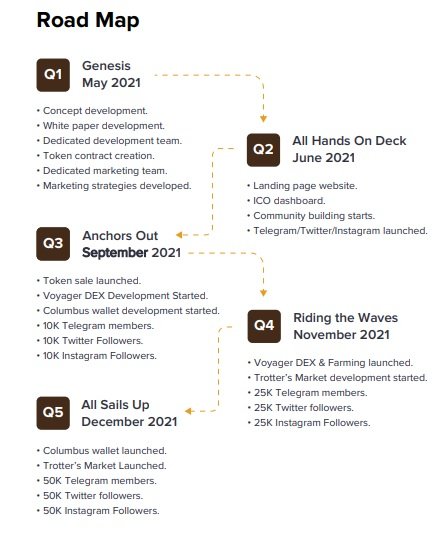Columbus Token - Redefining Decentralized Finance

If were to effectively scrutinize the ineffciencies of traditional finance, we would have to look further beyond what we consider to be the key turning points in modern-day economics. In fact, we would have to look back hundreds of years.
The most stable and concrete store of value that we’ve ever had in history is undoubtedly Gold. Gold set a standard for the store of value because of a few qualities that it exhibited. It was unique, scarce in supply, and desirable.
Gold had a lot of use cases, the most important of which was as jewelry. This meant that Gold was almost unanimously accepted as a viable store of value. Additionally, a good store of value should be limited in supply. When the supply of an asset is inflated, the value suffers a downtrend. With Gold, the supply is always controlled and one can accurately find how much Gold is in a country’s reserves.
This unanimous acceptance of Gold as a store of value and currency of trade is evident when you look at how we used Gold to buy and sell items before we had paper currency.
The Trust Model
For any financial system to work, it has to have a trust model. What this basically means is that for someone to accept something as payment, they have to have trust in that object or commodity.
Gold was the perfect commodity to instill trust with the people, which is why pre-1971 currencies were backed by Gold. Specifically speaking, the US Dollar was backed by Gold, and all the other currencies were backed by the US Dollar.
But, in 1971, when US President Richard Nixon suspended the Gold Standard, this system of currencies being pegged to the value of Gold was no longer valid. This gave birth to Fiat Currencies.
Fiat currencies are not backed by Gold, in fact, they are not backed by any commodity. The reason that Fiat has value is that the Government orders it to be valuable. It is legal tender.
This gave Governments almost unlimited power over money, and in turn, the financial system.
The Problem
The problem with a centralized financial system is that all of the powers are vested with a single authority or group of authorities. They control the system and can make changes as they please. The economy depends on the decisions of policymakers.
Inflation is one of the major problems associated with the Fiat system. This means that Governments can cover deficits by printing more money and inflating the currency supply. What this actually does is bring more currency into the market, inflating the market, and, in turn, devaluing money.
Third-World Countries
One of the other major problems, the most significant problem that Columbus plans to solve, is access to basic financial services.
There is a large portion of the population in third-world countries of continents such as South America, Africa, and Asia that are unbanked.
The word unbanked means that these people are not in the banking system. They do not have bank accounts or have access to basic financial services such as loans, interest income, etc. This concentrates wealth and opportunities with only a smaller portion of the population.
Decentralized Finance
Decentralized Finance came as a solution to this problem, allowing people to connect with each other in a peer-to-peer fashion and access various financial functions.
Although Bitcoin started the wave of decentralization, DeFi took this a step further by allowing even the unbanked the opportunity to access these services.
In theory, this is true. But the reality is far from it.
For one, decentralize finance is still relatively a new term to even an average crypto user. To make a profit or access the financial functions that DeFi has to offer, a user has to have a certain degree of technical knowledge.
For example, yield farming is a great way for users to generate passive income with their crypto tokens. But for yield farming to be profitable, they have to apply different strategies. And these strategies are not easy to come up with. This is the reason most people entering DeFi do not make a profit. All they can do is invest in a DeFi token and hope for the token price to increase.
The Columbus Solution
The Columbus project looks to solve these inherent problems associated with Decentralized Finance and provide users with a seamless and frictionless ecosystem where they can access various financial opportunities.
The Columbus ecosystem simplifies finance and gives the users simple platforms where they can easily enjoy the fruits of DeFi.
Decentralized Exchange
Users can swap their BEP-20 standard crypto tokens on the Voyager DEX by connecting their web3 wallets with the Binance Smart Chain network enabled. The platform works and similar to familiar DEXs such as PancakeSwap and Uniswap.
Liquidity Mining
Users can add liquidity to existing token pairs in the liquidity pool and earn passive income. They can also add their own tokens and create token pairs and list their own crypto tokens for their projects. Each liquidity provider will be given Voyager LPs when they stake their tokens. They can redeem these tokens whenever they want by unstaking.
DEX Aggregation
Voyager DEX is also a DEX aggregator that crawls across various DEXs on the BSC network and provides users with the best value for their trades. Even if sufficient liquidity is not found in the Voyager liquidity pools, the users can still swap their tokens.
Sailor Farms
Sailor Farms further incentivizes users for providing liquidity to Columbus Token (CBS) pairs, as well as other token pairs. Users can stake their Pancakeswap LP tokens on the Sailor Farms and earn a high-APR yield.
Trotter’s Market (NFT Marketplace)
Every platform in the Columbus Ecosystem is built for the people. But the problem with a completely open marketplace is that it could compromise the quality if the NFTs hosted for Sale or Auction
To solve this, we have included a voting system where CBS holders can not only vote on different aspects of the platform but also vote on each NFT listing. The votes and reviews on the listing are caught by the algorithm, similar to how social media platforms measure user engagement and promote these NFTs to the homepage.
User-generated NFTs
We believe that NFTs on a mainstream platform should not be limited to just a few big players in the business. Whether you are a professional artist or a budding artist looking to earn through their artworks, Trotter’s Market lets you sell and auction your NFTs seamlessly.This whole process is governed by smart contracts meaning that it is completely decentralized. Once a user buys an NFT for the artist’s listing page, the amount automatically gets added to the artist’s account balance and they can claim their rewards directly to their web3 wallet.
NFT Collections
Users can sell NFT collections such as trading cards, collectibles, and comic books/graphic novels on the platform.This feature is especially useful for comic artists looking to publish their books or comic strips and earn with their work.
Columbus Wallet
The Columbus Wallet is a multi-chain cryptocurrency wallet that lets you hold and transfer cryptocurrencies from different blockchains.Additionally, the wallet is a single access point for users to access various Decentralized Applications (DeFi), and crypto-based financial functions without having to rely on multiple applications.The Columbus wallet lets users access a variety of DeFi services, including that of the Voyager DEX platform.

Voyager DEX Module

Tokenomics
- Token Name: COLUMBUS & CBS
- Platform: Binance Smart Chain (BEP-20)
- Total Supply: 10,000,000,000,000
- Token Sale: 6,000,000,000,000 (60%)
- Initial Market Cap: $1100000
Links
Website | Whitepaper | Twitter | Facebook | Telegram | Instagram | Medium | Reddit | Discord
My Bitcointalk Profile: https://bitcointalk.org/index.php?action=profile;u=423449
BSC Address: 0x459BfBFaeF4b36a09CBb220804195A45d40b3ce3